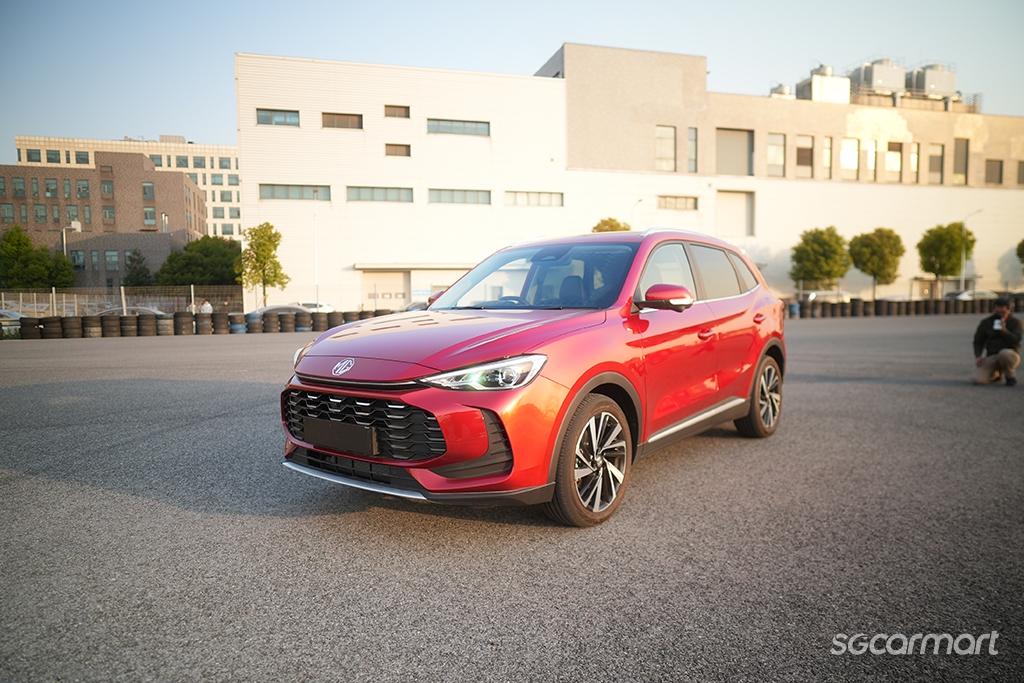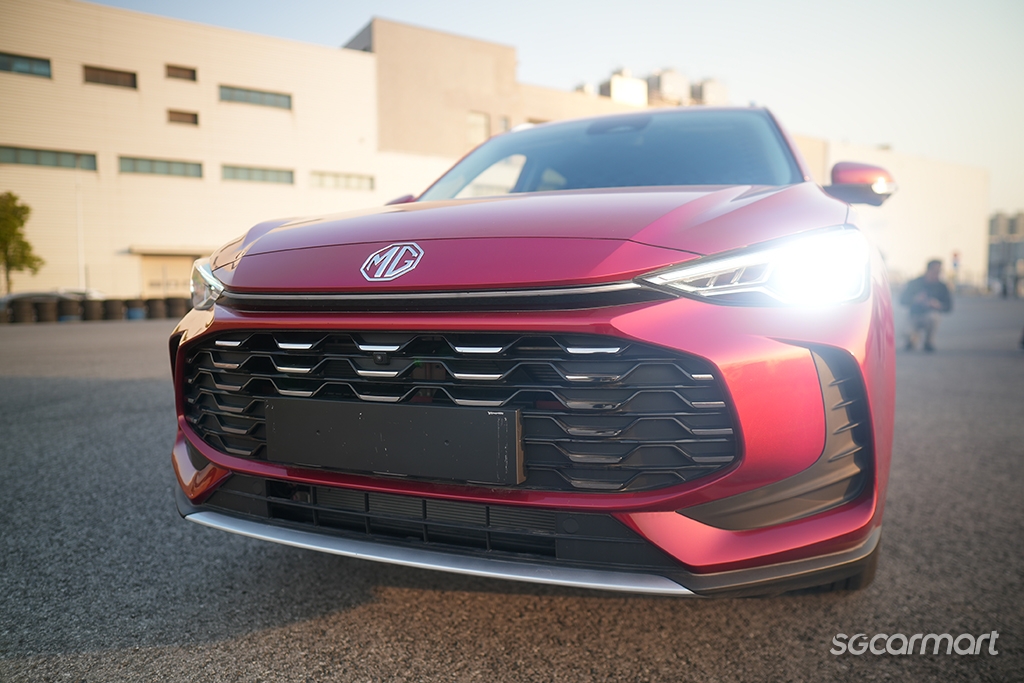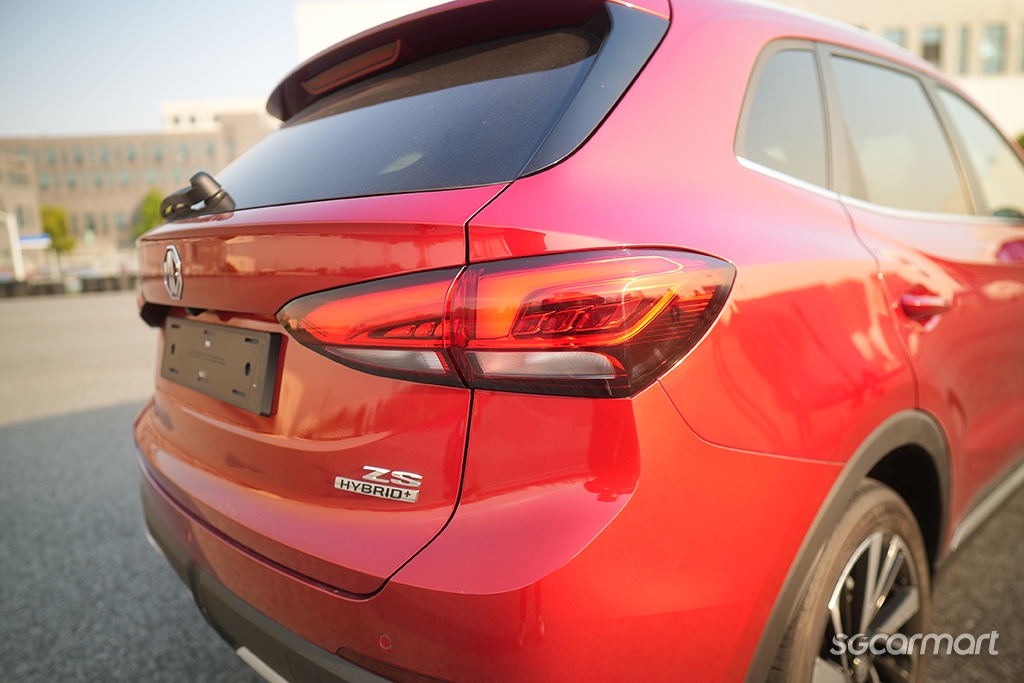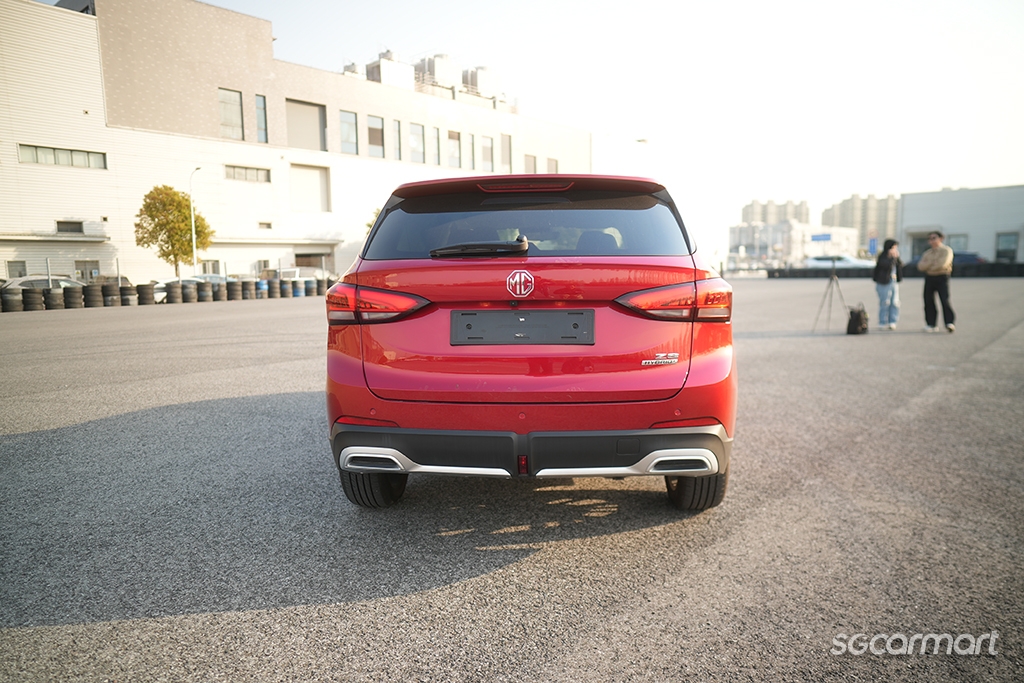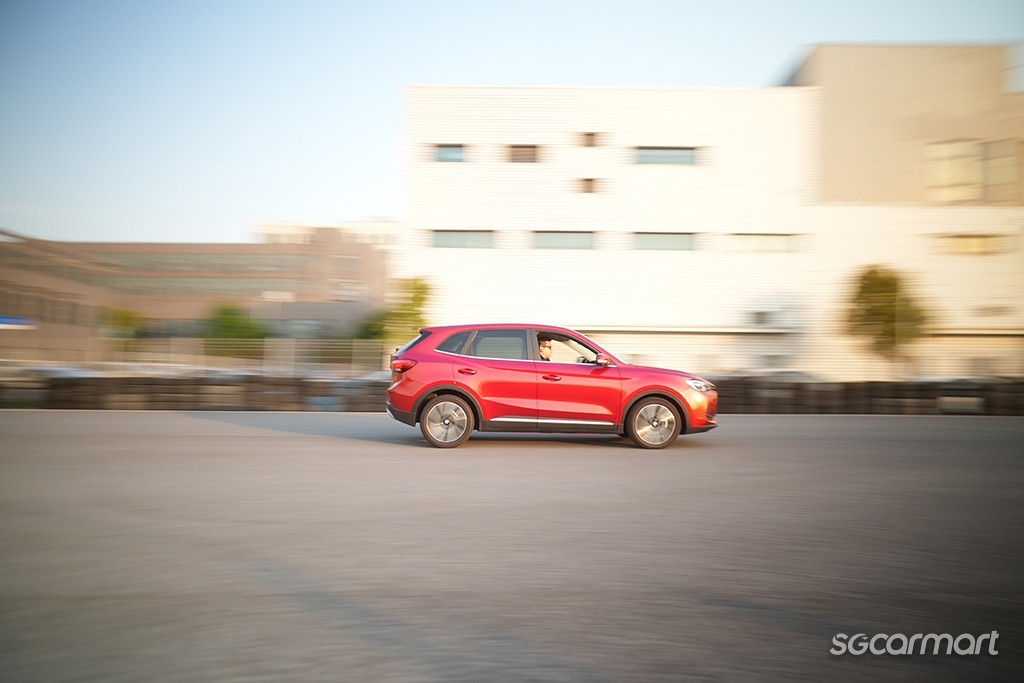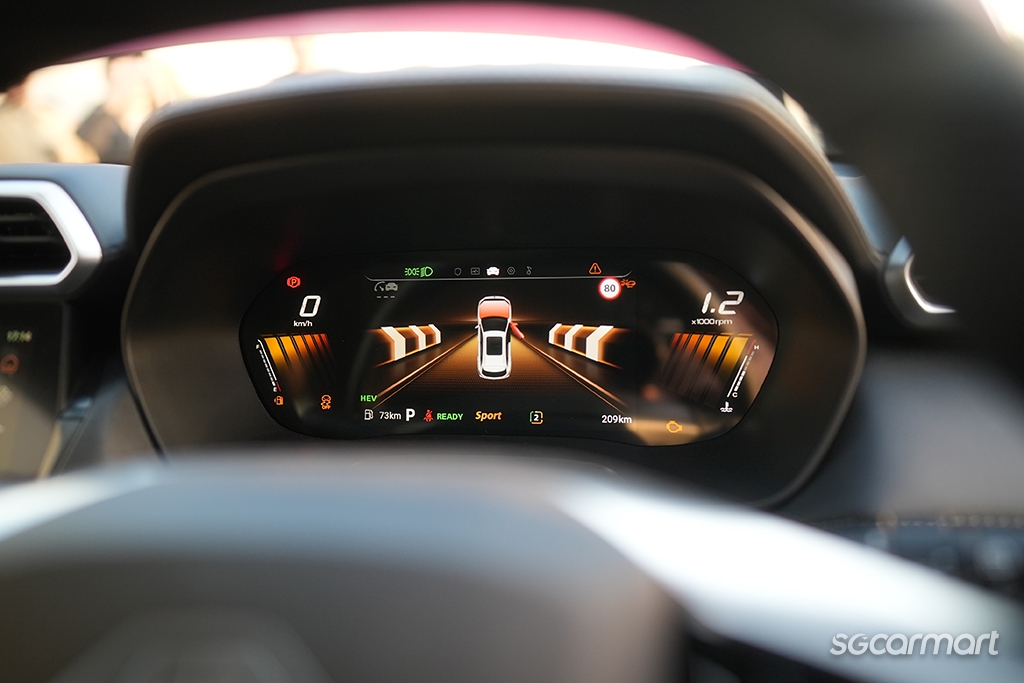MG ZS Hybrid+ First Drive Review
12 Aug 2025|1,116 views
What We Like
Fresh styling gives it more presence
Cabin is now more spacious and modern than before
Petrol-electric drivetrain gives it good pep
What We Dislike
Official fuel economy still falls short of segment leaders
Forget the MG ZS you knew.
For those in the local market, our MG ZS has - since its arrival in 2020 - been fully electric as the ZS EV. And I highlight 'fully' because, well, it's a battery-electric vehicle (BEV).
The new ZS though, takes a different turn.
In Shanghai, I got the chance to get up close with the new MG ZS Hybrid+ (or the MG ZS32 as internally coded by the brand). Given that we've known the ZS as a bonafide EV locally, the model is in a rather weird spot this time in our market. In international markets, a ZS with a combustion engine under the hood was never really a shocker. It's just that Singaporean drivers have never been acquainted with the idea.
The new ZS Hybrid+ sports a new grille and new dimensions.
It's cooler, as it should be, now looking more like the little brother of the HS which debuted in second-generation form earlier this year at the Singapore Motorshow. Size-wise though, it enters the hotly-competed compact SUV/crossover space here in Singapore, and measures 4,430mm long, 1,818mm wide, and 1,635mm tall.
That's a whole 107mm longer than the outgoing MG ZS EV (it's also a bit wider, though not as tall). For context, this means the ZS Hybrid+ sits slightly below the freshly-launched MGS5 in size.
Interestingly, the taillights look more similar to those on the MG 5 EV than the outgoing facelifted ZS EV
Unlike the outgoing ZS though, this latest-generation ZS will arrive with a hybrid drivetrain as opposed to a fully electric drivetrain. In terms of MG's local lineup, you can think of the MGS5 taking over as the EV-entrant - a space that it should better occupy anyway, since it rides on a bespoke electric platform. The ZS, conversely, will be offered only as a hybrid. (A quick aside: MG says upcoming local EV offerings will be following the 'MGSY' naming convention, Y being a placeholder for a number.)
Inside the cabin, it feels like the ZS has definitely grown quite sizeably. Where the current ZS EV is rather compact in the driver's cabin, the incoming ZS Hybrid+ is distinctly much airier and more spacious in comparison.
A key unique point of the new ZS Hybrid+, however, is its battery size. A tiny 1.83kWh battery seems insignificant in a world of EVs, but for hybrids (with a self-charging system), this figure is significantly more sizable than in other HEVs.
Compare that with a Toyota Yaris Cross Hybrid's 0.76kwh battery, for example, which it trumps by almost three times in capacity. Even compared to the massive Hyundai Santa Fe Hybrid's 1.49kWh battery, the ZS Hybrid+'s battery size still reigns supreme.
Jointly propelled by a 134bhp electric motor and a naturally aspirated 1.5-litre engine that puts out 101bhp, the ZS Hybrid+ appears to have been engineered for power - or at least that's what seems to be its all-naturale flair, based on what we experienced.
The model we got to test around the carpark-track is eager and keen. Just like how the Korean hybrids seem to make magic with their 1.6-litre engines in much-heavier cars like the Santa Fe Hybrid and Kia Sorento Hybrid, the ZS Hybrid's 1.5-litre engine is keenly assisted by the torquey electric motor. A light tap on the accelerator sends the compact SUV jolting ahead effortlessly.
Singaporean drivers love a compact SUV, in Cat A power, which is what the ZS is aimed for. But at the same time, that begs the question: How will the ZS Hybrid+ be detuned for Singapore? By engine output? By motor output? A combination surely, but by which measure, and by how much? At a stage as early as this, there was no clear answer yet.
Admittedly, with an official fuel consumption figure of 20km/L, the ZS Hybrid+ will not beat out the bestselling likes of the Toyota Yaris Cross Hybrid in sheer efficiency. And if so, then what does the buyer have to consider?
The answer: A perky Cat A-friendly crossover with handsome looks, a modern interior, and a keen growth in cabin space. (After being tossed about on track in the rear of the ZS Hybrid+, I can attest to its spaciousness; it certainly supersedes the Yaris Cross Hybrid on this front.) When it does land in Singapore sometime later in 2025, will this be enough to win buyers over? Time will soon tell.
What We Like
Fresh styling gives it more presence
Cabin is now more spacious and modern than before
Petrol-electric drivetrain gives it good pep
What We Dislike
Official fuel economy still falls short of segment leaders
Forget the MG ZS you knew.
For those in the local market, our MG ZS has - since its arrival in 2020 - been fully electric as the ZS EV. And I highlight 'fully' because, well, it's a battery-electric vehicle (BEV).
The new ZS though, takes a different turn.
In Shanghai, I got the chance to get up close with the new MG ZS Hybrid+ (or the MG ZS32 as internally coded by the brand). Given that we've known the ZS as a bonafide EV locally, the model is in a rather weird spot this time in our market. In international markets, a ZS with a combustion engine under the hood was never really a shocker. It's just that Singaporean drivers have never been acquainted with the idea.
The new ZS Hybrid+ sports a new grille and new dimensions.
It's cooler, as it should be, now looking more like the little brother of the HS which debuted in second-generation form earlier this year at the Singapore Motorshow. Size-wise though, it enters the hotly-competed compact SUV/crossover space here in Singapore, and measures 4,430mm long, 1,818mm wide, and 1,635mm tall.
That's a whole 107mm longer than the outgoing MG ZS EV (it's also a bit wider, though not as tall). For context, this means the ZS Hybrid+ sits slightly below the freshly-launched MGS5 in size.
Interestingly, the taillights look more similar to those on the MG 5 EV than the outgoing facelifted ZS EV
Unlike the outgoing ZS though, this latest-generation ZS will arrive with a hybrid drivetrain as opposed to a fully electric drivetrain. In terms of MG's local lineup, you can think of the MGS5 taking over as the EV-entrant - a space that it should better occupy anyway, since it rides on a bespoke electric platform. The ZS, conversely, will be offered only as a hybrid. (A quick aside: MG says upcoming local EV offerings will be following the 'MGSY' naming convention, Y being a placeholder for a number.)
Inside the cabin, it feels like the ZS has definitely grown quite sizeably. Where the current ZS EV is rather compact in the driver's cabin, the incoming ZS Hybrid+ is distinctly much airier and more spacious in comparison.
A key unique point of the new ZS Hybrid+, however, is its battery size. A tiny 1.83kWh battery seems insignificant in a world of EVs, but for hybrids (with a self-charging system), this figure is significantly more sizable than in other HEVs.
Compare that with a Toyota Yaris Cross Hybrid's 0.76kwh battery, for example, which it trumps by almost three times in capacity. Even compared to the massive Hyundai Santa Fe Hybrid's 1.49kWh battery, the ZS Hybrid+'s battery size still reigns supreme.
Jointly propelled by a 134bhp electric motor and a naturally aspirated 1.5-litre engine that puts out 101bhp, the ZS Hybrid+ appears to have been engineered for power - or at least that's what seems to be its all-naturale flair, based on what we experienced.
The model we got to test around the carpark-track is eager and keen. Just like how the Korean hybrids seem to make magic with their 1.6-litre engines in much-heavier cars like the Santa Fe Hybrid and Kia Sorento Hybrid, the ZS Hybrid's 1.5-litre engine is keenly assisted by the torquey electric motor. A light tap on the accelerator sends the compact SUV jolting ahead effortlessly.
Singaporean drivers love a compact SUV, in Cat A power, which is what the ZS is aimed for. But at the same time, that begs the question: How will the ZS Hybrid+ be detuned for Singapore? By engine output? By motor output? A combination surely, but by which measure, and by how much? At a stage as early as this, there was no clear answer yet.
Admittedly, with an official fuel consumption figure of 20km/L, the ZS Hybrid+ will not beat out the bestselling likes of the Toyota Yaris Cross Hybrid in sheer efficiency. And if so, then what does the buyer have to consider?
The answer: A perky Cat A-friendly crossover with handsome looks, a modern interior, and a keen growth in cabin space. (After being tossed about on track in the rear of the ZS Hybrid+, I can attest to its spaciousness; it certainly supersedes the Yaris Cross Hybrid on this front.) When it does land in Singapore sometime later in 2025, will this be enough to win buyers over? Time will soon tell.
Thank You For Your Subscription.
- New Position
- Newfound Power
- New Proposition
















